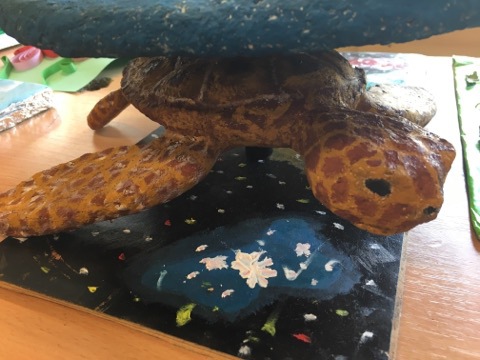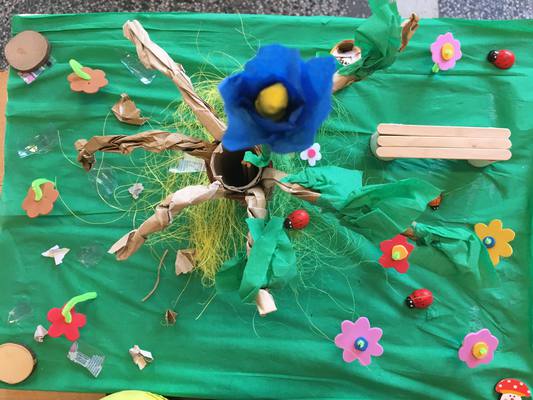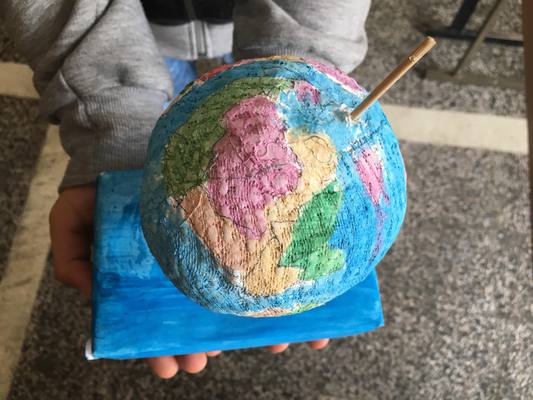

Board game "Lithuanian grammar"
Board game
2-6 players can play, person (not player) must be the game manager. He checks the answers.
Players choose their game figures and by rolling the dice find out who starts first (the highest number starts).
Playing the game: players roll the dice and move their figures according it. If they stop on a box marked with a colored circle, they have to perform a certain task. If the task is performed, they can play as usual, if no – they have to pass one roll. The one who finishes all moves – wins the game.
Red – explain the spelling of the word.
Yellow – explain the proverb.
Green – explain the meaning of the word.
Blue – say a phraseology.
Brown – say at least 2 words related with the given one.
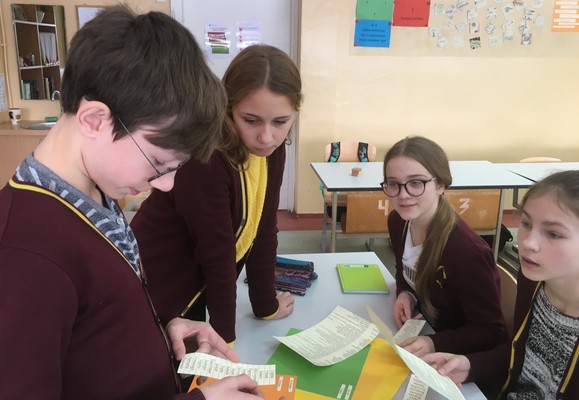

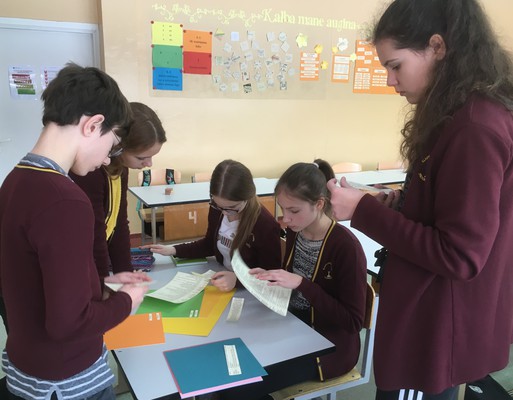
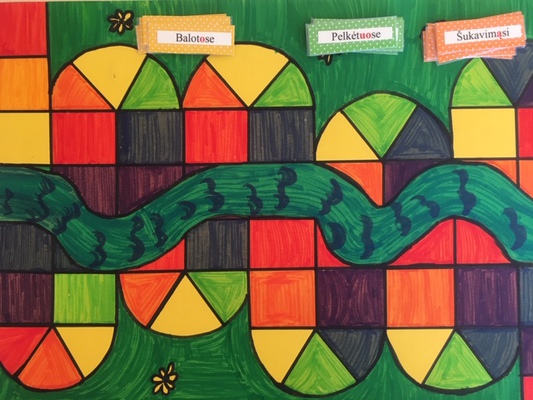
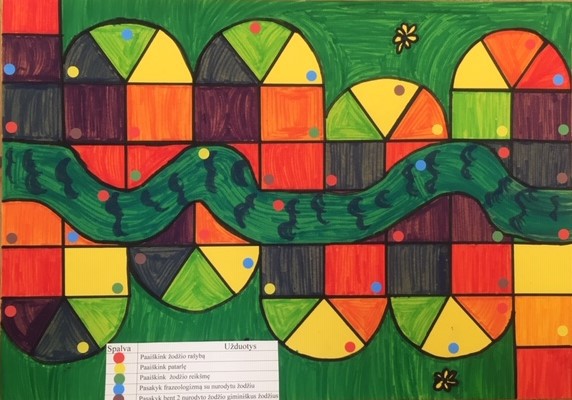
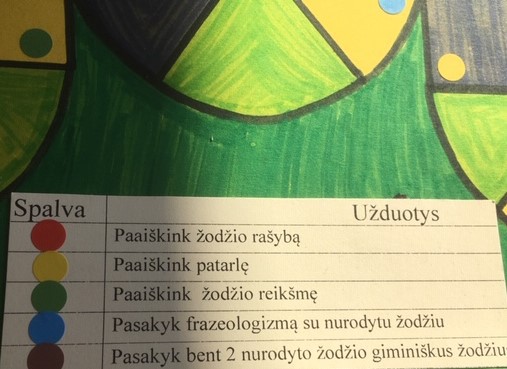
Domino “Word Formation”
A game for 2 players. The blocks are turned over, placed on the table and mixed. By rolling the dice, players find out who starts first. Both players take 7 blocks and do not show to each other. The beginner puts one on the table and the other player has to put onto, but only the one which has the same word formation. The game ends when one of the players has no blocks left.
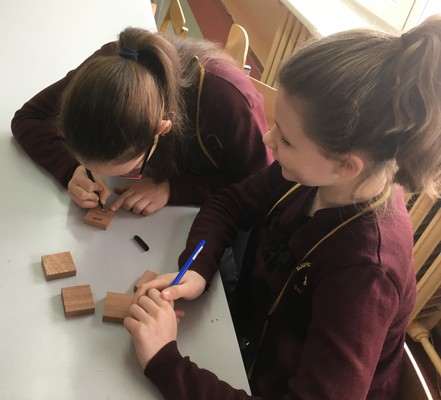
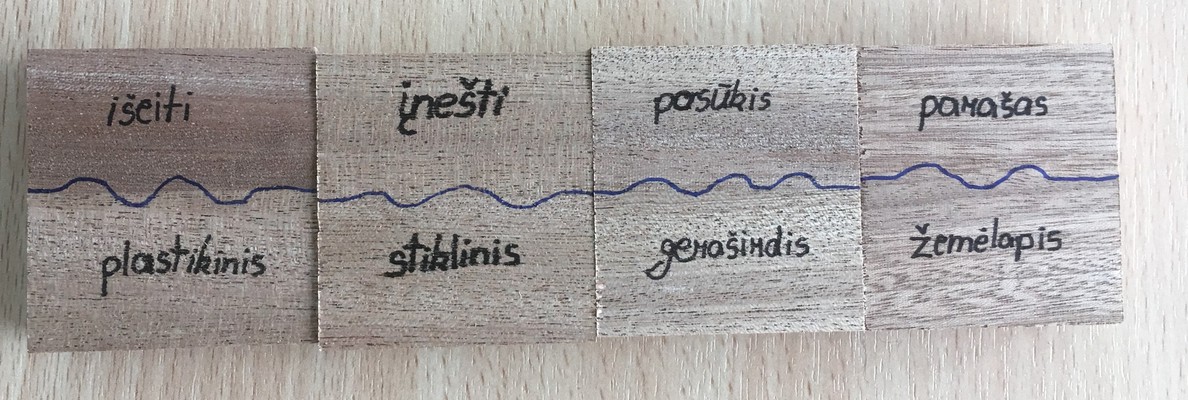
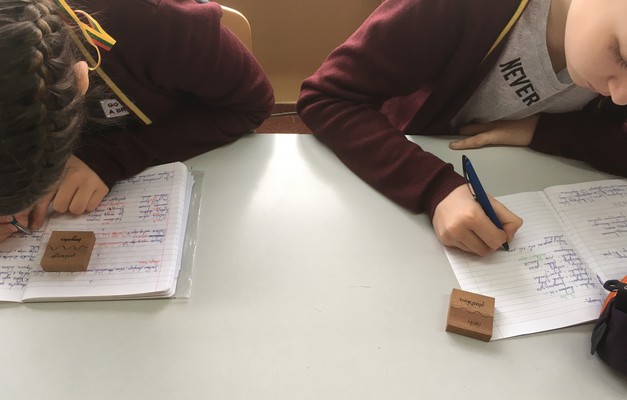
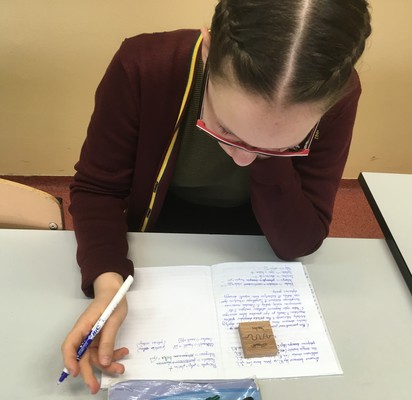
Towers of phraseological units
2-6 players can play, 1 person (not the player) has to be the manager of the game, he checks the answers.
Players decide the turn of the game (clockwise, counterclockwise).
Playing the game: the player pulls one block, reads the phraseologism and explains it. The manager checks the answer and if it is correct, he puts the block on his right. If the answer is incorrect or not explained, he puts the block on his left. The one whose right tower is the biggest, wins the game.
Additional task. The player has to create a sentence with phraseologism, the meaning of which he did not know.
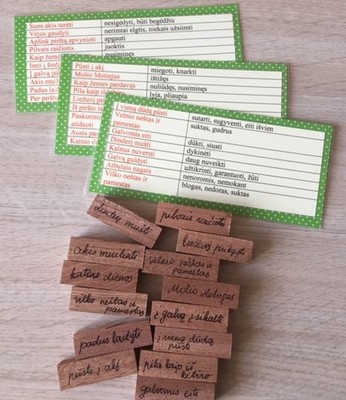
Languages cards
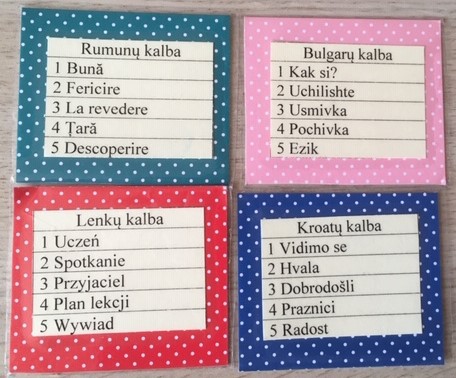
Inspiration cards
Photos which can be used for a variety of activities:
*creating a text according the cards (types of texts according writing purpose (commentary, appeal, information text), types of texts (narration, description, reasoning));
*writing words according the given task (write words and non-conjugatable verb related words of the specified speech parts according the picture);
*reflection (choose and comment the picture that best fits your mood);
*creation of tasks (questions) for classmates (make a creative task according the selected/given pictures; make questions according which classmates will have to create a text).
*use of pictures analyzing text (students choose the mood, problematics, theme and the main idea).
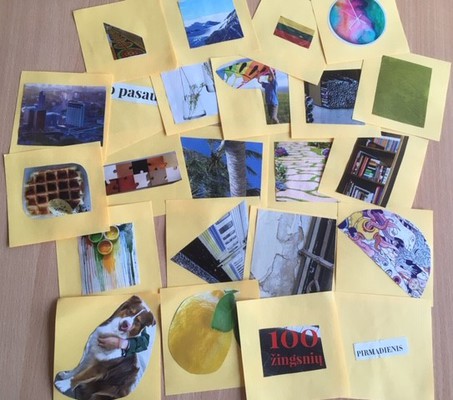
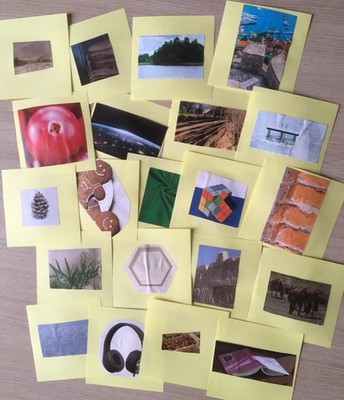
A set of book quotes: for reading comprehension, creative works

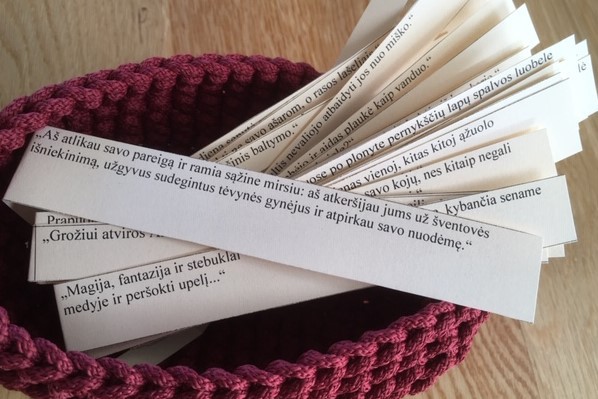
Game "Speech parts"
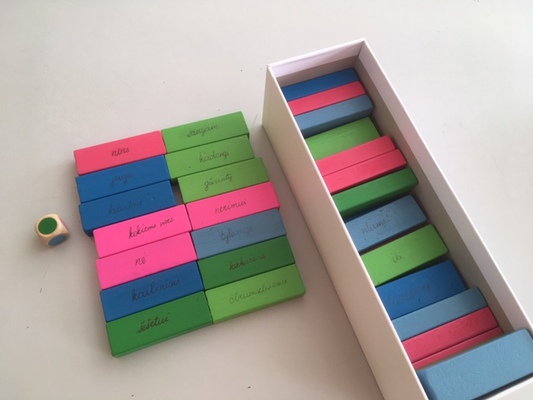
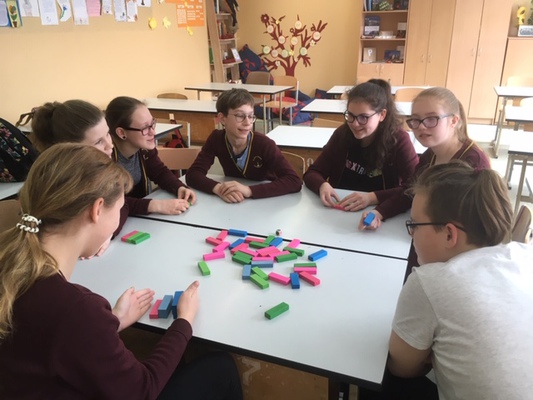
2-8 players can play, 1 person (not the player) has to be the manager of the game, he checks the answers.
Player rolls the dice and pulls colorful block according the dice. When the word is shown, he has to specify the speech part. Additional task can be given – to explain how it was determined.
If the player does not know the answer, another, the one who rises his hand first can answer. The block goes to the one who answered correctly. The one who collects the largest number of blocks wins.
Alias
This game can be played by four players or bigger teams. Cards with the words are mixes and put into one pack. The lower card is flipped in order to notice that all card have been played and remix the pack again when needed. The order of the game is decided by lot. Teams collect points that are listed in the table.
Teams have to decide which members explain and which guess. The player pulls the card and describes the meaning of the word for team member so that he could guess it. It is not allowed to use parts of the word or deliberately related words, or words with the same root in description. Time for explanation runs out according the sand clock. Team gets as many points as its member correctly guesses words.

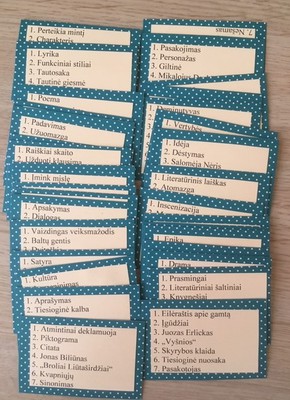
Stories cubes
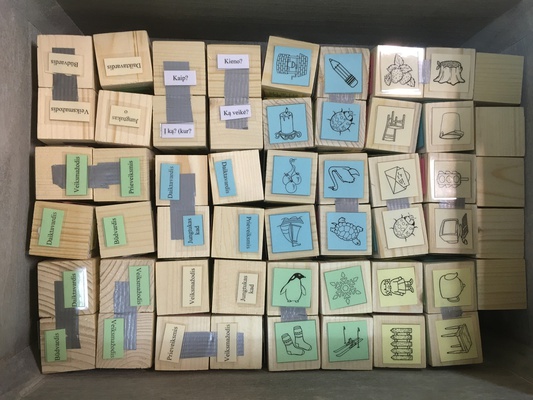
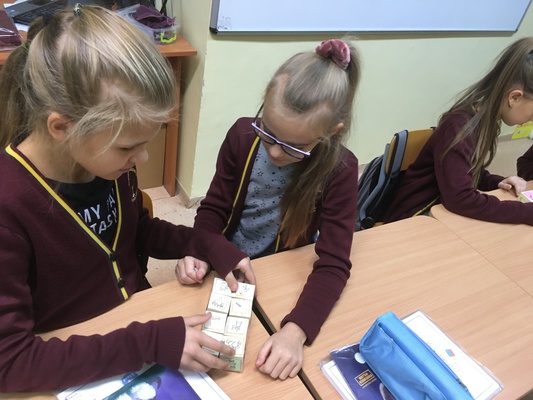
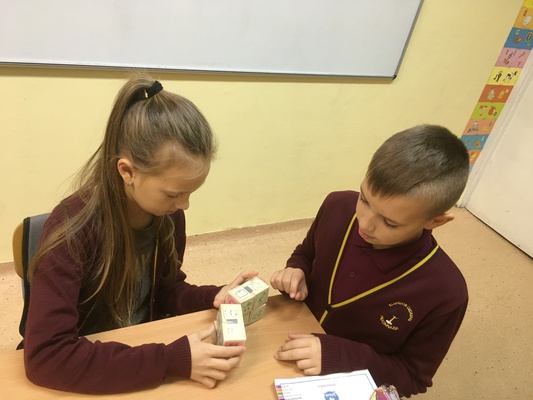
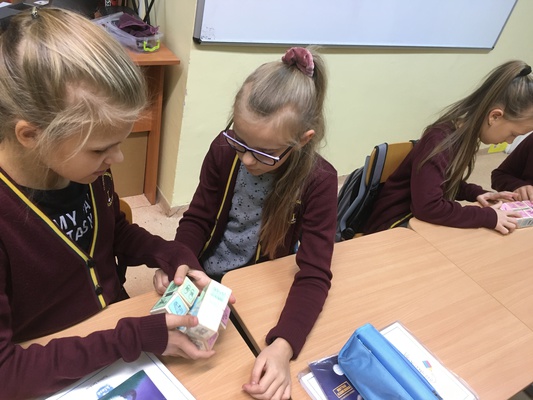

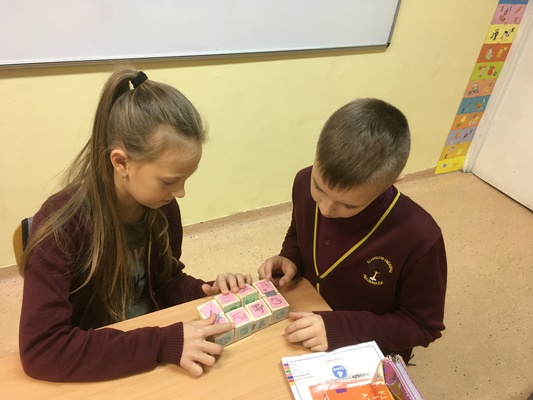

Trading cards
https://drive.google.com/file/d/1pUgAaaNm3cALpzaVtYXh-OaWHU2DOydG/view?usp=sharing
The sets of cards represent people, places and recipes from the 5 countries and a wild card. The game is played like this: each person (student,guest, parent, teacher) chooses (randomly) one card from each category and then creates a story. The others ask questions to try to get the author of the story to include even more details.
" scrolling="yes" src="https://joom.ag/A0le" width="570">
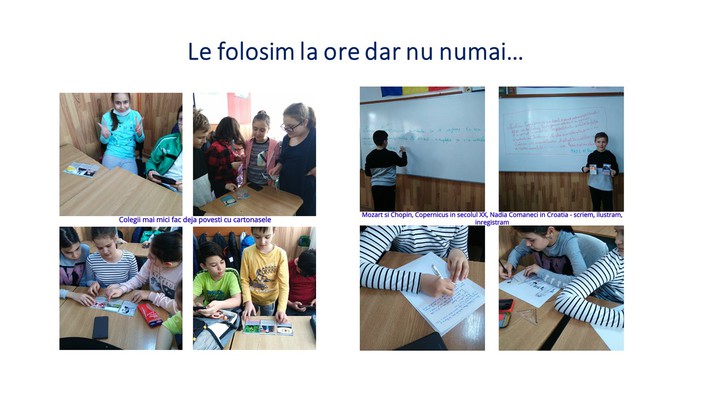
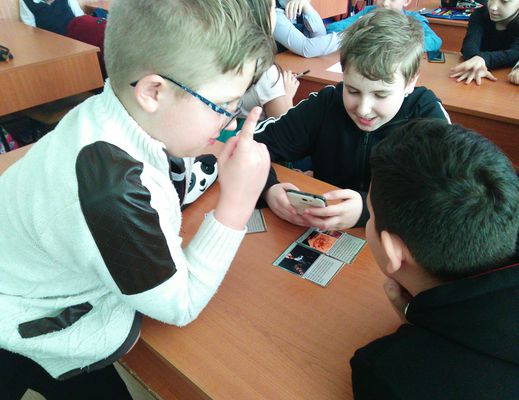
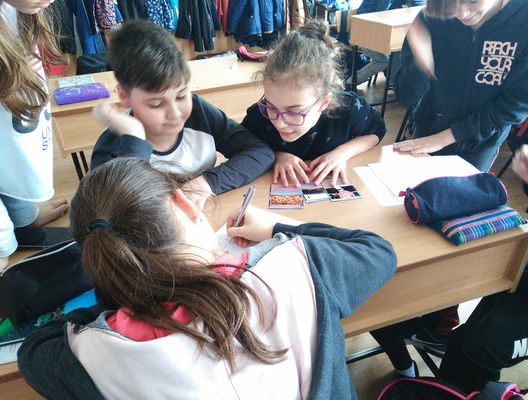
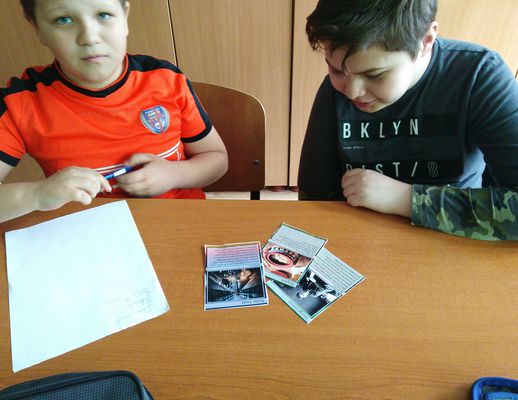
Climate change and creative writing
This can be done individually or in teams. Each students draws a card and they have to put themselves in the shoes of whoever/whatever is written there and write about it. It can be adapted to all ages and you can use a variety of tools if you want them to work online. If you choose to do this in teams, then each member of the team chooses a card and they have to create a story/encounter between all the characters they drew and find a way for them to interact, engage with the audience, but mainly emphatise and put themselves in the characters' shoes. The idea is to raise awareness and help students do some soul searching, be creative and find the silver lining. You will notice the topics are real problems we are facing, but you can also find some more unusual items as suggested by students. The set is continuously growing with new ideas.
We tested these cards during the teacher training meeting in our KA229 project «Let's sharpen our minds and enrich our lives by creating a European TV Channel!». The meeting took place in our school and we used mixed teams of teachers and students to do the hard version, the team story.
We have also used these during the English classes with all our 5th and 7th graders as well as with some of our 8th graders. Translate them into your language and you can use them for creative writing in your native language.
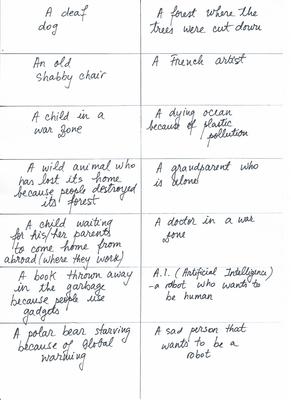
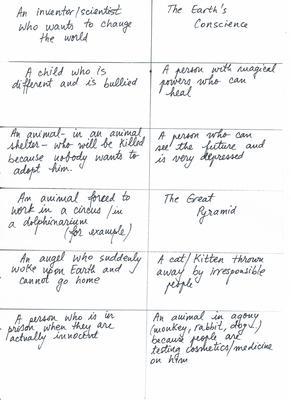
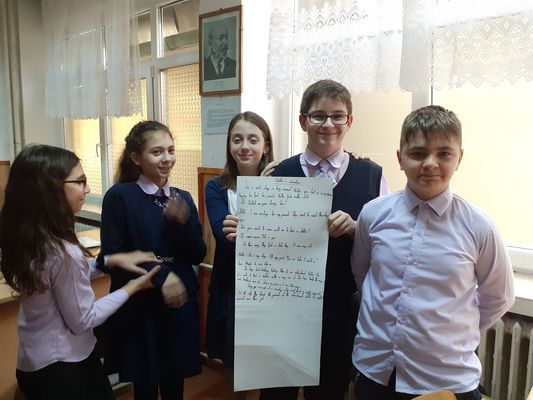
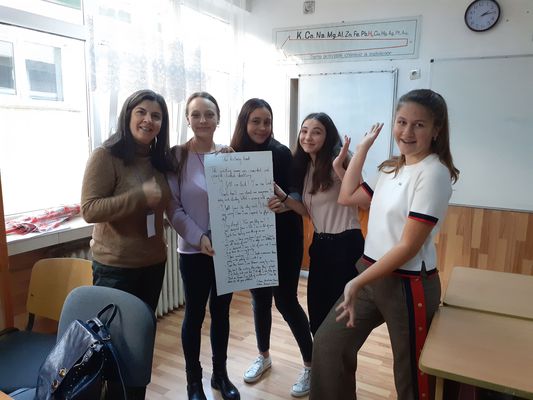

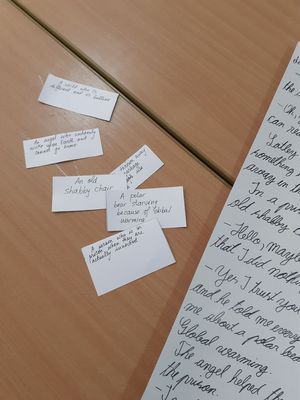

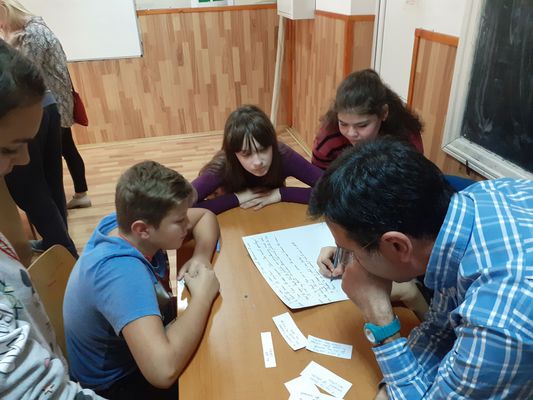
20-word lists
Each student creates a list of 20 words and passes that list to other colleagues, from his/her class or not. Then, either individually or in teams, students create stories based on other word lists.

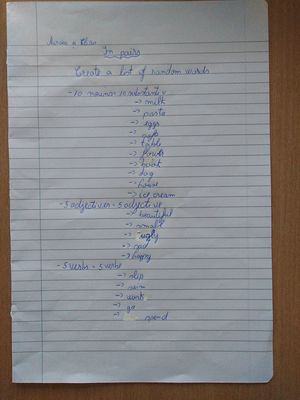
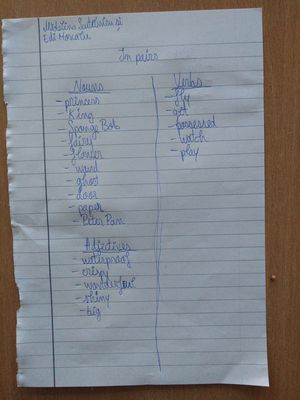
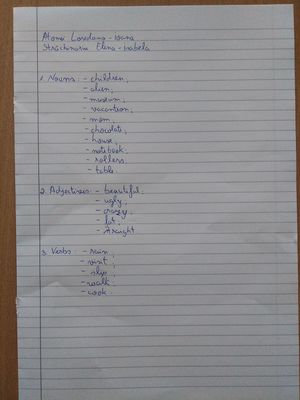

On a cold January afternoon, teachers, parents and students of our school gathered to design and make some new interesting teaching tools for our youngest students. These tools will help the children learn Croatian Language, Maths, Science, etc.
Here are some of the tools which were created at our meeting.
Mathematical Sun
It is a creative game with the numbers placed on the sun’s rays. The task is to add two numbers and pin the result on the ray.
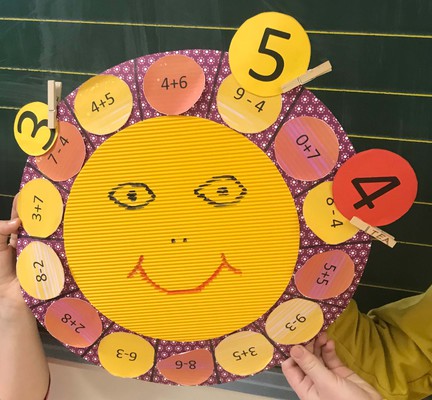
Play with Money
In this game, children have money-shaped stickers of 5 and 10 Kuna (Croatian money). Students have to add two numbers by using the stickers and show the result as the amount of Kuna.

Numbers Line
Students add red and black cubes and find the correct answer.
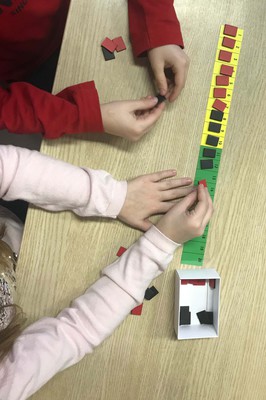
Dominoes
Learning grammatical categories (singular and plural, gender, etc.) while playing dominoes.
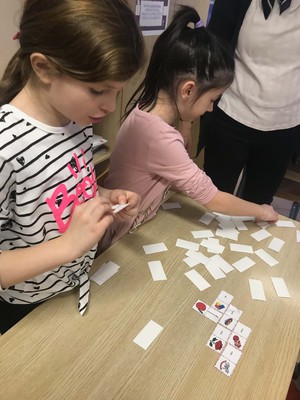

Board game
Students created a board game using different materials. They made a colourful board and made some questions up. The questions concern cultural information about our partners as well as typical grammar and vocabulary issues in English language. You use the dice and some counters (that the students made themselves) to move on the board. Every field has different colour and on that depends the question.
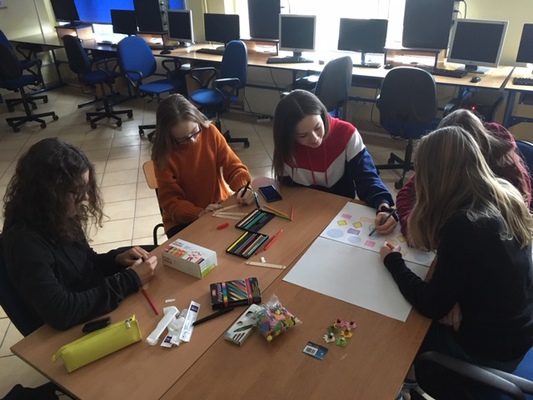
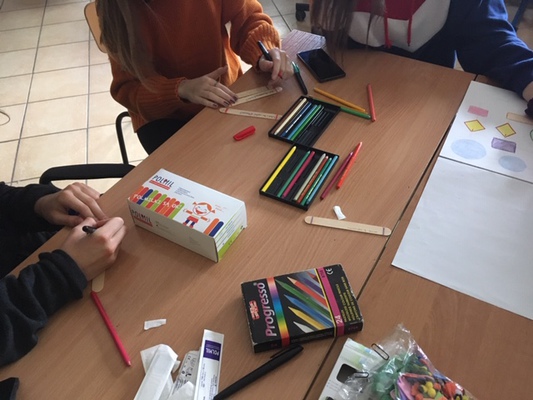
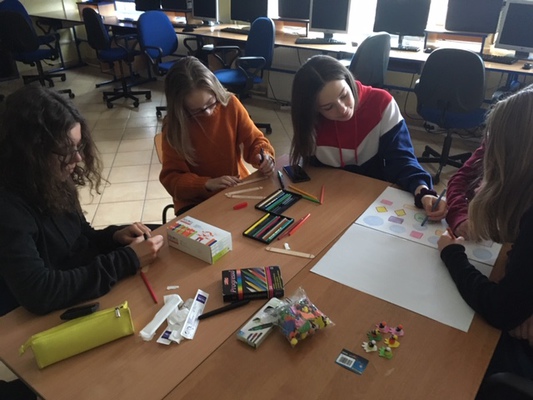
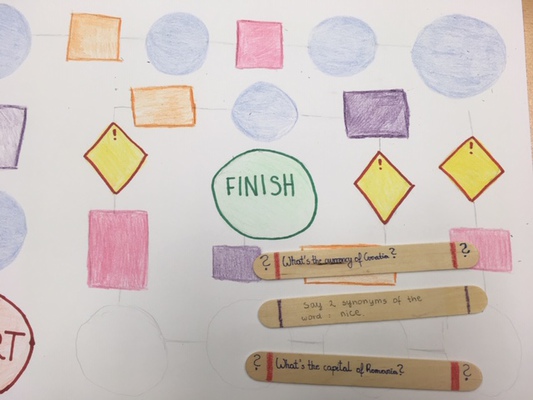
POLISH BOARD GAME
For 2-6 players.
The game checks the knowledge about one obligatory book used during the polish lessons. Students made a colourful board and made some questions up. Roll the dice and answer the questions. The questions concern one obligatory book.
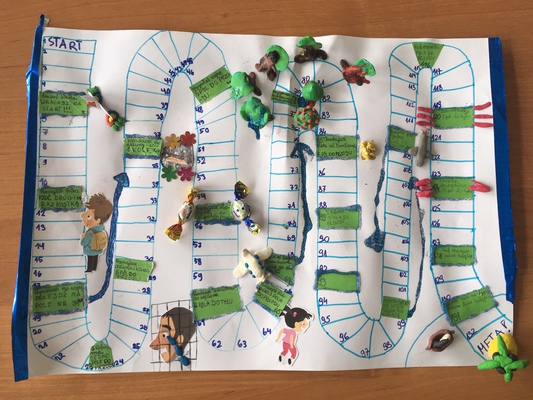
URBAN GAME
In order to answer the questions you have to walk around the town and find the answers in different places. The attached map will help you to get to know our town, its culture and its history.
gra_mapa_bilgoraj (1).docx
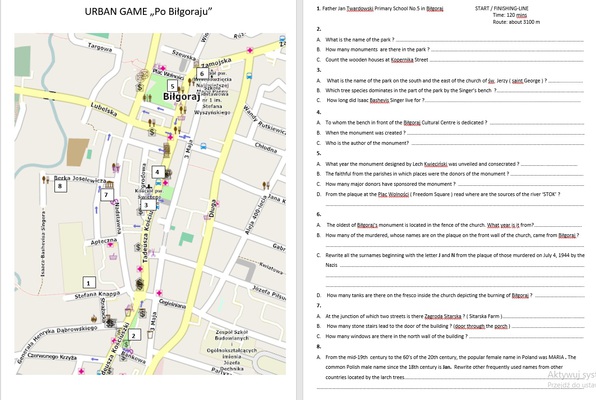

Projects in the classroom
Students are divided into 4 groups.
Each group has the task of formulating a project idea.
Students in the group plan activities to rationalize the idea and the end product.
They allocate their tasks, with the teacher's leadership.
Interviews are held in several lessons, studies are being conducted.
The end product is reported by the group and has been developed with ICT tools - web site, movie, presentation, e-book

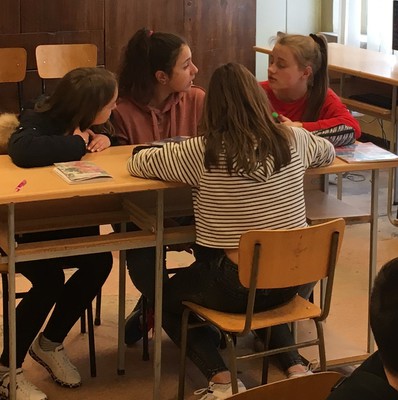
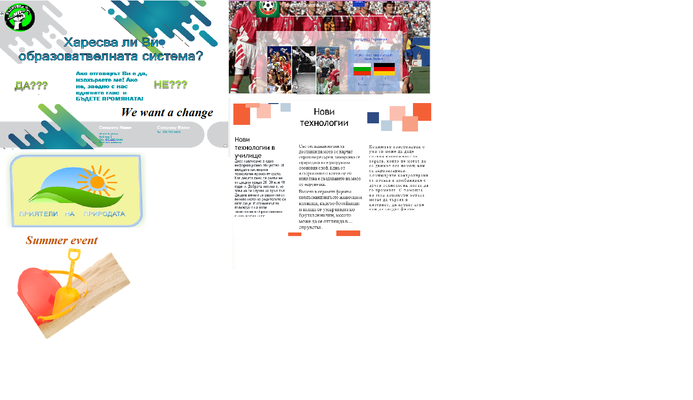
Scrapbooking:
It works in groups of 4-6 students. Each group has a pre-written narrative for our friends. Students recreate this story in the form of a book or a frame. The albums are decorated with different materials.
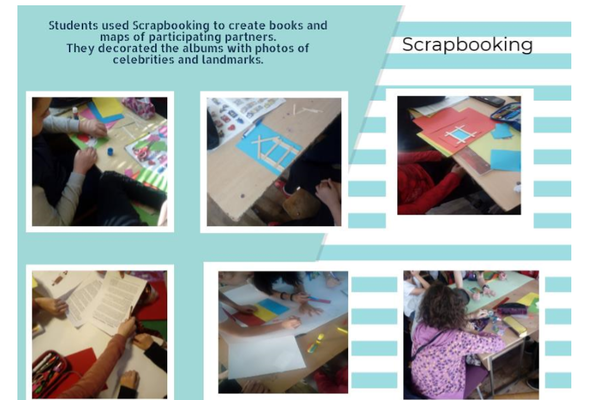
Mind cards-games
On the floor are picture cards.
Students have the task of making short phrases, stepping on them.
Each map that is used is separated.
After the cards are over, the cards are turned and stacked.
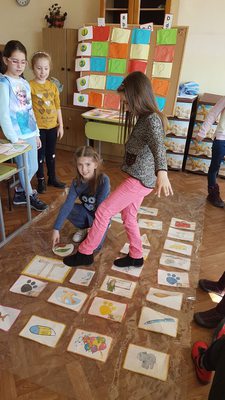
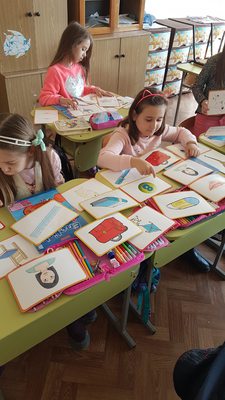
Workshop for ideas: Wonders of waste materials
The task is to show students the need to preserve nature.
In the classes of geography, landscape elements, animals, plants are made of waste.
The condition is to use only materials that are designed for garbage.
